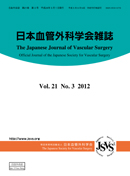Volume 16, Issue 3
Displaying 1-12 of 12 articles from this issue
- |<
- <
- 1
- >
- >|
-
2007Volume 16Issue 3 Pages 16_3_i-16_3_ii
Published: April 25, 2007
Released on J-STAGE: May 18, 2007
Download PDF (35K)
-
2007Volume 16Issue 3 Pages 555-561
Published: April 25, 2007
Released on J-STAGE: May 18, 2007
Download PDF (159K)
-
2007Volume 16Issue 3 Pages 563-566
Published: April 25, 2007
Released on J-STAGE: May 18, 2007
Download PDF (94K) -
2007Volume 16Issue 3 Pages 567-570
Published: April 25, 2007
Released on J-STAGE: May 18, 2007
Download PDF (121K) -
2007Volume 16Issue 3 Pages 571-574
Published: April 25, 2007
Released on J-STAGE: May 18, 2007
Download PDF (100K) -
2007Volume 16Issue 3 Pages 575-578
Published: April 25, 2007
Released on J-STAGE: May 18, 2007
Download PDF (119K) -
2007Volume 16Issue 3 Pages 579-582
Published: April 25, 2007
Released on J-STAGE: May 18, 2007
Download PDF (85K) -
2007Volume 16Issue 3 Pages 583-587
Published: April 25, 2007
Released on J-STAGE: May 18, 2007
Download PDF (113K) -
2007Volume 16Issue 3 Pages 589-592
Published: April 25, 2007
Released on J-STAGE: May 18, 2007
Download PDF (91K) -
2007Volume 16Issue 3 Pages 593-596
Published: April 25, 2007
Released on J-STAGE: May 18, 2007
Download PDF (115K) -
2007Volume 16Issue 3 Pages 597-600
Published: April 25, 2007
Released on J-STAGE: May 18, 2007
Download PDF (86K)
-
2007Volume 16Issue 3 Pages 601-605
Published: April 25, 2007
Released on J-STAGE: May 18, 2007
Download PDF (71K)
- |<
- <
- 1
- >
- >|
